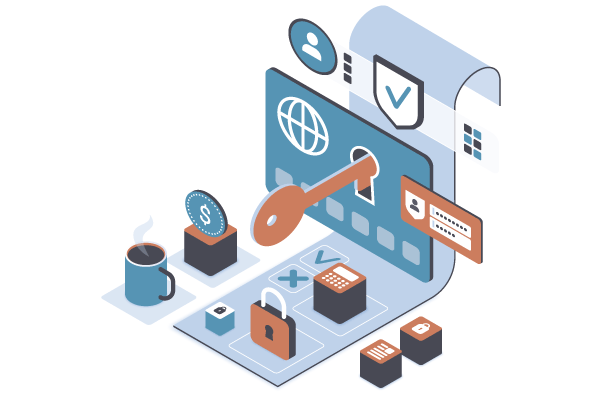E-commerce fraud is a growing concern for online businesses and consumers alike. With the increasing popularity of online shopping and alternative payment methods, criminals are finding more opportunities to steal sensitive information and use it for their own gain. A recent study suggests that in 2023, merchants may lose as much as $48 billion to fraudulent e-commerce purchases.
In order to protect your business and your customers, it’s important to be aware of the most common threats, while also implementing specific measures to prevent e-commerce fraud.
What are the most common types of fraud in e-commerce?
Because e-commerce is a card-not-present payment channel, it’s an attractive target for malicious actors. They don’t have to physically possess a stolen card, which opens up more opportunities for fraudulent activity. According to a recent Visa study, nearly 2.6 percent of e-commerce orders in 2021 turned out to be fraudulent.
It’s worth noting that e-commerce fraud isn’t just limited to complicated hacking schemes. E-commerce fraud refers to any kind of criminal activity that takes place using an e-commerce platform – either a website or a mobile app – as a medium. Some common types of e-commerce fraud include:
Card testing fraud
This type of e-commerce fraud occurs when someone gains access to someone else’s payment data, then attempts to make one or more purchases with the stolen card. Because the user doesn’t know whether they can successfully use the card for a fraudulent transaction, they’ll often “test” the card on a few small, low-risk purchases. Once they’ve tested the card and know that it can be used for larger transactions, they’ll often begin making more expensive purchases.
Account takeover fraud
This occurs when someone gains access to someone else’s account with an online merchant. There can be several methods of access, such as phishing the legitimate account owner to steal their account information or purchasing stolen credentials on the dark web. Once they’ve gained access, the attacker can make purchases with the customer’s card on file, change their shipping address, or make other unauthorized changes to the account.
Interception fraud
This type of e-commerce fraud occurs when someone attempts to intercept a legitimately placed order to take the goods for themselves. For instance, they may ask the business to change the shipping address after the order has been placed, or they may ask the shipping company to deliver to their address instead of the original customer’s.
Friendly fraud is another related type of fraud that merchants should also be aware of. Customers may purchase items or services with their own credit card, but later claim that they did not authorize the transaction. In these instances, merchants will need to defend themselves from the resulting chargeback to prove that the transaction was valid.
E-Commerce Fraud Prevention
Nearly 90 percent of global merchants note that e-commerce fraud prevention is critical to their business strategy – not just to protect their customers, but also their revenue.

Another important step in preventing e-commerce fraud is to regularly monitor your website for suspicious activity. This includes keeping an eye on your website traffic, looking for any unusual spikes or decreases in traffic, and monitoring your sales and customer information for any unusual patterns or anomalies. If you notice anything suspicious – such as a new customer placing an order that’s much higher than your average order size, or one customer placing several small purchases with different credit cards – it’s important to take action immediately. (According to the Visa study mentioned above, merchants are manually screening around 20 percent of their orders – around 3 percent of which they ultimately end up declining.)
In addition to these measures, there are also several best practices that you can implement during payment processing to help prevent e-commerce fraud. For example, you should always verify the identity of your customers by requiring them to provide a valid email address and phone number.
Payment tokenization can also make your e-commerce transactions more secure. Instead of storing your customers’ payment data on your system, you can replace the sensitive data with unrelated, unencryptable placeholder data. If a breach were to occur, the hacker would not be able to retrieve your customers’ card numbers or security codes. The payment tokens would be entirely unusable, helping protect your customers from fraudulent access of their actual card data.
More recommendations for securing your online shopping environment can be found on the Payment Card Industry’s Information Supplement: Best Practices for Securing e-Commerce.
While complying with PCI requirements does not completely protect your business from fraud, the programs are designed to increase your security and reduce your exposure as much as possible. (This is why they’re required for any merchant that accepts credit card payments from its customers.) Compliance with PCI guidelines also prepares merchants for how to deal with a potential security-related event, including e-commerce fraud.
Protect your business from e-commerce fraud
Concerned about e-commerce fraud impacting your business? Contact Curbstone today to see how more secure online payment processing technologies can help protect your customers’ data and reduce your risk.

